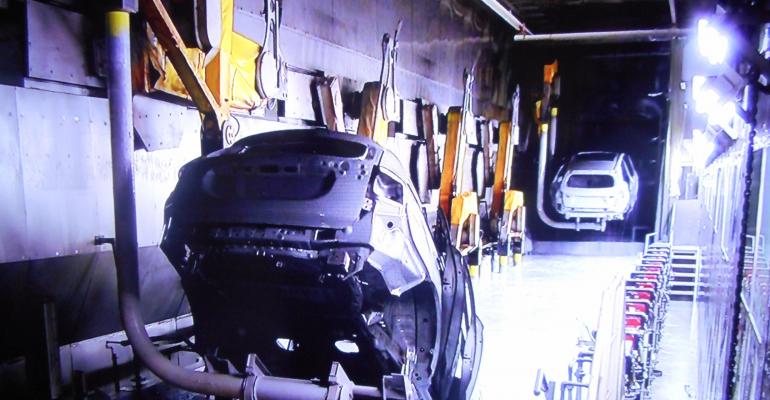OKAZAKI, Japan – Despite its advancing age, Mitsubishi’s 48-year-old Okazaki plant is undergoing a major renewal which, when completed at the end of summer, will possess some of the most advanced features of any auto plant in Japan.
The operation produces midsized CUVs – Outlanders, Outlander plug-in hybrids and RVRs. The RVR is sold in Europe as the ASX.
More than 90% of output is exported with Europe accounting for more than half of the total, with 114,000 units in fiscal 2014.
In the fiscal year ending in March 2016, the automaker plans to build 247,000 units, up 20%, including 117,000 Outlanders, 86,000 RVRs and 44,000 Outlander PHEVs.
Okazaki is the ‟mother” plant of Mitsubishi’s main overseas manufacturing operations in Thailand, China, Russia and the U.S. In 2017 it will add Indonesia, where the automaker is investing a reported ¥40 billion ($323 million) to construct a new plant outside Jakarta.
At Okazaki, located 15 miles (24 miles) southeast of Nagoya, Mitsubishi spent ¥10 billion ($80 million) to renovate the paint shop in 2011. Booths were shortened, cutting energy consumption (mainly from air-conditioning) 34%. Despite the smaller booth size, the shop still can accommodate a Pajero-class SUV.
Unpainted vehicles are held by carriers attached to what are best described as train cars that move through the 93-ft. (29.5-m) line from which the vehicles are slowly dipped into a pit containing electrolyzed primer paint. The vehicles exit the pit at the same speed and angle. Plant officials claim the process reduces paint loss by half.
By switching to water-based paint for the primer and base coats, the automaker has achieved a 72% reduction in volatile-organic-compound emissions. Eliminating one of three baking processes cuts carbon-dioxide emissions 18%, Mitsubishi says.
Straw and Steel
The final-assembly shop includes new chassis and trim lines, both of which were renovated last year, and features what Mitsubishi calls a tatami conveyance system. Tatami is a straw-covered floor mat used in traditional Japanese housing. At Okazaki, tatami is a flat steel plate that slides through the line on rollers built into the floor.
A vehicle sits atop each plate, eliminating the need for overhead hangers and the capital investment required with every model change. Plant officials claim that the platform-based system, seen in other modern assembly plants worldwide, enables the automaker to accommodate fluctuating volumes while reducing space between vehicles on the line.
Coinciding with installation of the new conveyor system, the automaker has adopted what is known as kit assembly. Parts are sorted and placed into plastic cartons in a staging area off the line. The cartons then move down the line in computer-controlled prearranged order together with each vehicle.
This eliminates line side operators having to select parts; they merely assemble them. The result is fewer mistakes and fewer defects.
There are 217 stations in the final-assembly shop including six dedicated to the Outlander PHEV. Included are the car’s lithium battery, motor, inverter and power-control-module installation, and subassembly of the engine and transmission.
There are only 16 robots in the shop for, among other things, installation of front and rear window glass, the car’s main battery, engine and transmission. Okazaki employs lift-assist devices for heavy, bulky components like seats and doors, but the automaker mostly has replaced forklifts with automated guided vehicles throughout the plant.





